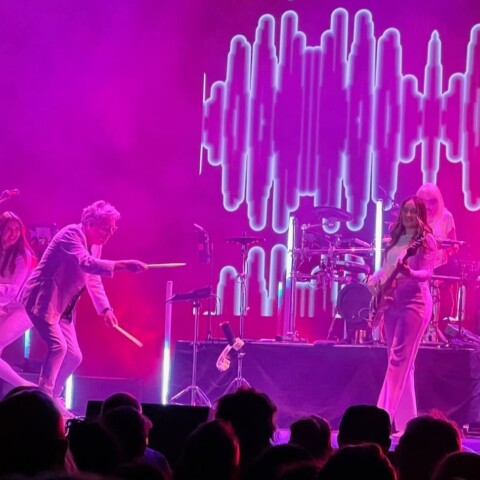‘Easy listening’ isn’t easy at all, writes DR RICHARD VAREY.
 I’ve got a bee in my bonnet about musical wallpaper. People call it ‘easy listening’. But what really is easy listening?
I’ve got a bee in my bonnet about musical wallpaper. People call it ‘easy listening’. But what really is easy listening?
The category is an easy-thinking and easy-speaking phrase that too easily spills from the mouths of uncommitted and lazy hearers who are not really listening, and it does a mean disservice to much of the musical art that is described by this catch-all term.
Not all ‘easy listening’ is easy listening! Actually, for me, none of it is easy and lots of it is facile.
Take the diverse and extensive body of composition, playing, and production from Bob James. Easy listening? No way! Melodic instrumentals crammed full of artistic creativity and masterful playing too substantive and extensive to qualify for mere easy, or even smooth, and deserving of mere vaporous “surface” listening. It’s a matter of what gets put in: deep musical expression or deliberately contrived to be innocuous? It’s a matter of what is taken out: musical impression or cognitive and emotional anaesthetic?
Some don’t want the music to intrude on what they are doing. They hear but aren’t committed to listening. For others, the whole reason for music is substitution. It is something to do – deep listening when music is the mode of communicating. Easy listening music derives from mood music, which is written and performed to never be intrusive, and always conducive to a situation. It was intended to be comforting background to other activities, so it’s clear why in some situations it is out of place or has no place.
 If it’s so easy, what is it worth? Easy listening doesn’t arouse, provoke, inspire, agitate, irritate, or challenge: all of the responses that make music worthwhile. When there is just a rhythm and a melody, with lyrics removed, I find that too hard to attend. Deep quality music experience requires commitment to hear what was put in by the musician creating their art to reach others.
If it’s so easy, what is it worth? Easy listening doesn’t arouse, provoke, inspire, agitate, irritate, or challenge: all of the responses that make music worthwhile. When there is just a rhythm and a melody, with lyrics removed, I find that too hard to attend. Deep quality music experience requires commitment to hear what was put in by the musician creating their art to reach others.
Music only makes sense when someone listens. So what is it when there is no such commitment? For music to ‘get’ to me, it must be some or all of the following: novel, inventive, authentic, connecting, deep, complex, artististic, evocative, expressive, personal, stylish, unsettling. I want an identifiable soundstage that reproduces the recording space ambience – an experience beyond performance. This requires open ears and open mind, in a quiet acoustic space without distraction. Active listening produces and heightens auditory and cognitive discrimination, and music comes into focus.
Personally, I always feel uneasy when the music is easy. Easy listening is just too easy – a pallid counterfeit imposter of what greatness in music can be. The predictability of the known, the safe, the leisurely means it isn’t worth much at all. It doesn’t stimulate, it doesn’t provoke – it’s an aural mental comforter for the soporific. Comfortably numb? Oh no, not for me, thank you.
Easy listening is not discordant and it doesn’t discomfort, and that’s why it jars for me. It is ‘nice noise’ that doesn’t arouse attention. As background music it has a reassuring presence that doesn’t distract. It’s perceived as environmental information, mere decorative acoustical wallpaper, and I don’t want that from music.
 Easy listening is hard to listen to because I don’t get what the composer and performers put into it: I can’t sense their intentions, or I don’t like what I sense. It doesn’t get to my soul.
Easy listening is hard to listen to because I don’t get what the composer and performers put into it: I can’t sense their intentions, or I don’t like what I sense. It doesn’t get to my soul.
At heart, it’s a matter of taste. Easy listening is just plain too hard on the psyche to listen to, I reckon. Mood music, for sure. My mood quickly changes to despondent at first hearing those syrupy strings. I’m not alone in experiencing my mental well-being damaged by distasteful music experiences!
* Dr Richard Varey writes about the electro-mechanics and the social psychology of this technology-facilitated art we call high-fidelity music reproduction.














